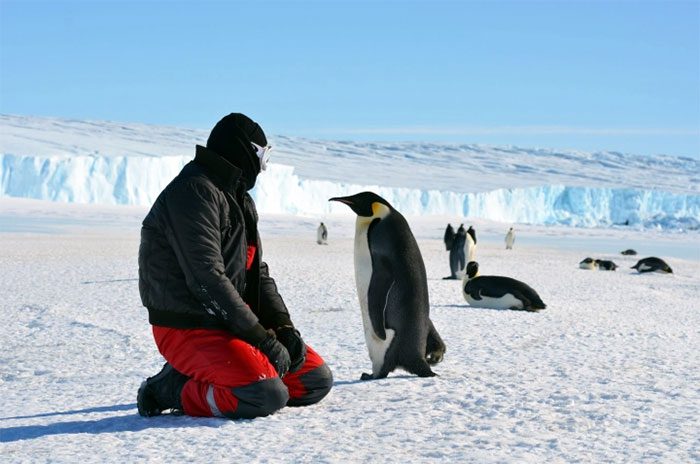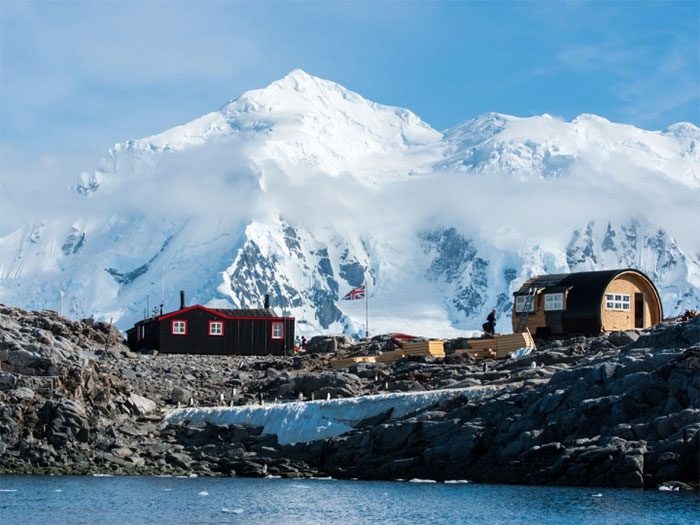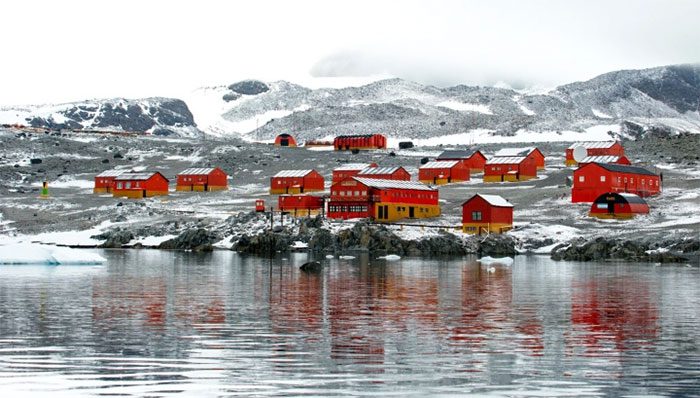Antarctica is often referred to as the “white Mars” due to its extremely harsh living conditions.
In the past, Antarctica had no permanent residents because of its severe climate and isolated position. It wasn’t until 1820 that humans developed the capability to set foot on the continent and bring technology for research.
People who come to live in Antarctica can be divided into two groups: scientists residing at research stations and tourists. Antarctica is a paradise for nature lovers, home to numerous species such as Emperor penguins, leopard seals, killer whales, and blue whales.

Antarctica is a paradise for nature lovers. (Image: Internet).
There is nowhere else in the world where you can see groups of penguins every half meter like here. Moreover, there are many unique features in Antarctica:
All Around White and Odorless
While in deserts everything is covered with sand, in Antarctica, everything is blanketed in white, making it very difficult to determine direction. Additionally, many areas in Antarctica lie at an altitude of 3,000 meters above sea level, resulting in thin air and low oxygen levels. Almost everyone will not be able to smell anything while they are here.

Almost everyone will not be able to smell anything while they are here. (Image: Internet).
Even Bacteria Find It “Hard to Live” Due to the Cold
The average temperature in Antarctica is -50 degrees Celsius, dropping as low as -80 degrees Celsius. Such conditions make it impossible for many bacterial species to survive.
The lowest recorded temperature is -97.7 degrees Celsius, nearly -100 degrees Celsius. Scientists and engineers in Antarctica must wear multiple layers of clothing, specialized boots, gloves, and goggles, and even wear masks to warm the air before breathing. This is crucial because inhaling excessively cold air can lead to pulmonary congestion.
Indistinguishable Day and Night
In Antarctica, during winter, the sun does not rise above the horizon, resulting in nearly complete darkness for four months. Conversely, during summer, the sun does not set below the horizon, filling all of Antarctica with light.

Antarctica is indeed a beautiful land.
This also means that when visiting here, the human biological rhythm gets completely disrupted, causing difficulties in sleeping and eating. Typically, after four months of darkness, on the first day of summer when the sun returns, people often feel excited to wake up early and enjoy the sunrise, feeling more refreshed and enthusiastic.




















































